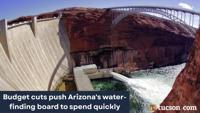Return on Investment (ROI) is almost always among the top three performance measurements for any business. When an investment can generate a strong ROI ŌĆö greater than what money would earn sitting in interest-bearing accounts ŌĆö businesses should strongly consider making that investment.
Visit Tucson exemplifies exceptional ROI performance. The organization annually generates a remarkable 2300% ROI, meaning it produces $24 for the metro Tucson region for every $1 invested in the organization.
Impressive Economic Impact
In 2023-24, Visit TucsonŌĆÖs efforts produced an economic impact of $304,571,589. This figure represents over $304 million in economic impact generated in a single year, achieved with total public funding of $12.5 million ŌĆö demonstrating that impressive 2300% ROI.
To put this in perspective, if Boeing were to relocate one of their airplane manufacturing facilities to Tucson, it would generate approximately equivalent economic impact of over $300 million. The crucial difference is that BoeingŌĆÖs impact would be a one-time occurrence, while Visit Tucson delivers this economic benefit annually to Tucson and Southern Arizona.
People are also reading…
Leadership and Vision
Felipe Garcia, President of Visit Tucson, brings deep understanding of the tourism sector and its value to the region. Born and raised in Monterey, Mexico, Garcia came to Tucson in 1993 and has remained here ever since, becoming a Tucsonan through and through.

Felipe Garcia, CEO/President of Visit Tucson
Visit Tucson operates as a public-private funded Destination Marketing Organization (DMO) ŌĆö a non-profit that provides destination marketing services for the City of Tucson and Pima County. The organization is funded exclusively through bed tax revenue, which visitors pay when staying fewer than 30 days in hotels, resorts, bed & breakfasts, and short-term vacation rentals. In 2024, the bed tax funds allocated to Visit Tucson totaled $12.5 million.
Strategic Positioning
Tourism today operates as a global business, with Tucson competing against every destination that business planners and families consider. Rather than attempting to compete with major cities like New York, Chicago, Los Angeles, London, or Paris, Garcia and his team have positioned Tucson as a niche destination.
As Garcia realized over a decade ago, Tucson needs to stop trying to be like other places and instead embrace its authentic identity with pride. Paraphrasing the late Anthony Bourdain, Garcia emphasizes that a cityŌĆÖs biggest asset is its uniqueness.
For example, Tucson has been awarded a UNESCO designation as a City of Gastronomy and Member of The Food Capitals by the Delice Network. Just this past week in Lyon, France at the annual meeting of the Food Capitals, Garcia was told that by unanimous vote, he was elected President of the Network.
As Garcia shared, ŌĆ£it looks like all member cities are inspired by what Tucson is doing. I hope this makes people feel proud of our community. We always look at other cities hoping to be like them. It is great to see other cities that want to be like us.ŌĆØ
TucsonŌĆÖs Unique Assets
Visit TucsonŌĆÖs marketing strategy highlights several distinctive aspects of the region:
- The Sonoran Desert with its exceptional beauty, flora, and fauna
- Tucson Convention Center facilities
- Diverse and abundant hotel accommodations
- Rich cultural diversity, particularly within the Hispanic community
- TucsonŌĆÖs authentic cowboy heritage
- Extensive array of golf courses and packages
- UNESCO designation as a City of Gastronomy and Member of The Food Capitals by the Delice Network
- The renowned Tucson Gem Show
- Tucson as an attractive film and television location
- Recognition as home to AmericaŌĆÖs Best Mexican Food
Measurable Results
Despite their limited budget, the Visit Tucson team has achieved impressive results through strategic use of technology and focused marketing:
- 62 million social media video views
- Media coverage valued at $34 million
- 430 meetings booked
- 215,057 group meeting & events hotel room nights
- 50,447 hotel room nights linked to sports events
- $4.1 million in direct film spending
- 6.2 million total visitors to Tucson and Southern Arizona
Competitive Context
The tourism industryŌĆÖs competitive nature becomes clear when comparing budgets. Visit Tucson operates with $12.5 million, while the Las Vegas Convention and Visitors Bureau commands a $457 million budget, including $103 million dedicated solely to advertising. To further illustrate the scale difference, a single hotel ŌĆö the MGM Grand ŌĆö maintains a $12 million budget, nearly equal to Visit TucsonŌĆÖs entire annual budget. Phoenix allocates $80 million for tourism marketing.
Investment Opportunity
While I donŌĆÖt claim expertise in city or county budget processes, business financing principles suggest a clear strategy: When an investment delivers 2300% ROI, serious consideration should be given to doubling, tripling or even quadrupling that investment.
Visit Tucson is successfully delivering on its mission. Increased investment would represent a sound strategy for the City of Tucson, Pima County, and all of Southern Arizona, promising continued economic benefits that far exceed the initial investment.













